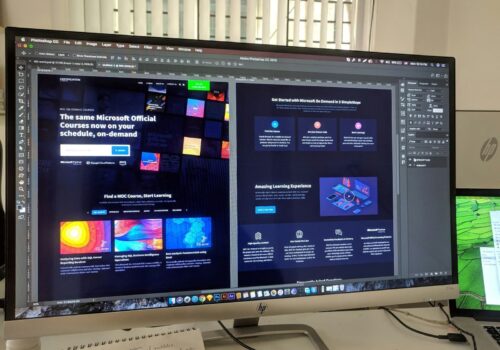Current Trends in Website Design Development
Nowadays, when everything is becoming digital, having a well-designed website is essential for the success of any business. Websites are no longer just an online presence; they are a vital tool for attracting and retaining customers, increasing brand recognition, and improving customer engagement. Website designers and developers must stay up to date with the newest trends as new technologies appear and user habits shift to remain competitive. The latest trends in website design and development that are influencing the industry will be discussed in this article.
Mobile-First Design
Businesses must make sure that their website is optimized for mobile devices as they are quickly replacing desktop computers as the primary method of accessing the internet. This will ensure that customers have a seamless and user-friendly experience. The mobile-first design ensures that websites load faster, which is a critical factor in keeping users engaged. In this context, website designers and developers are adopting a mobile-first approach, where websites are designed for mobile devices first and then scaled up for larger screens.
Several businesses have adopted a mobile-first approach and achieved impressive results. For instance, Airbnb, the leading online marketplace for booking accommodations, shifted to a mobile-first approach in 2012. The company reported that the strategy was successful because its mobile traffic rose from 6% to 41% in just two years.
Progressive Web Apps (PWA)
Progressive Web Apps combine the best features of web and native apps, providing users with a fast and engaging experience. According to a study by Gartner, by 2023, PWAs will replace 50% of general-purpose, employee-facing mobile apps, indicating the growing significance of this trend. Businesses may increase user engagement, attract a larger audience, and stay ahead of the competition by incorporating PWAs into their website development plan.
Minimalism
Minimalism has become a dominant design trend in website design and development. The minimalist approach involves simplifying website design and removing unnecessary elements to produce clear, user-friendly websites that offer a seamless browsing experience.
For example, Apple’s website is a perfect example of minimalism due to its use of white space, simple typography, and emphasis on product imagery. The company’s minimalist design strategy has helped it to build a strong brand identity and maintain a loyal customer base.

Dark Mode
Users can have a unique browsing experience thanks to the relatively new design trend known as “dark mode.” Dark mode reduces eye strain, especially in low light conditions, and preserves mobile device battery life. Additionally, dark mode adds a distinctive and stylish look to websites, making them stand out. This trend shows no sign of slowing down, with more websites and applications expected to incorporate dark mode in their design to enhance user experience and engagement.
Chatbots
Businesses are increasingly using chatbots as it has become a crucial tool to improve customer engagement and offer immediate assistance. Chatbots are particularly useful for businesses with a large customer base, as they can manage multiple conversations at once, freeing up staff to focus on other tasks.
According to a study by Business Insider, the use of chatbots in customer service is expected to save businesses over $8 billion annually by 2022.
Animation and Micro-Interactions
Animation and micro-interactions are crucial design elements that can bring websites to life and increase user engagement. Businesses can give their users a more customized and interactive experience by including small animations and interactions. A study by Adobe finds that websites with animations and small interactions have a 60% higher user engagement rate than static websites. Incorporating animations and micro-interactions can make a big difference in how users perceive a website, and they can help businesses stand out from the competition.
Voice User Interface
Voice user interface (VUI) is a trend in website design and development that is still in its early stages. As voice assistants become increasingly popular among users, website designers and developers will need to start considering how to optimize their websites for voice search.
Optimizing websites for VUI can help businesses reach a wider audience and provide a more seamless user experience.
Conclusion
In conclusion, website design and development play a crucial role in the success of any business. Businesses can stay ahead of the curve by following the latest trends and ensuring that their websites are optimized for user engagement, search engine rankings, and brand reputation. In this article, we looked at some of the current trends in website design and development, including mobile-first design, minimalism, dark mode, chatbots, animation and micro-interactions, and voice user interface. By adopting these trends, businesses can ensure that their website remains relevant and competitive in today’s digital landscape.




